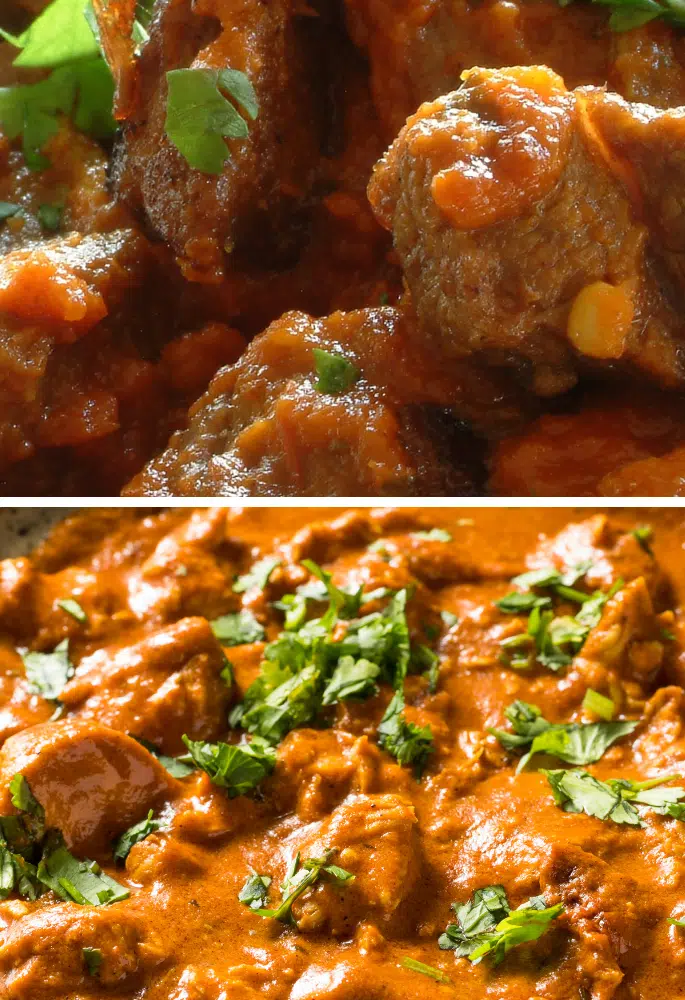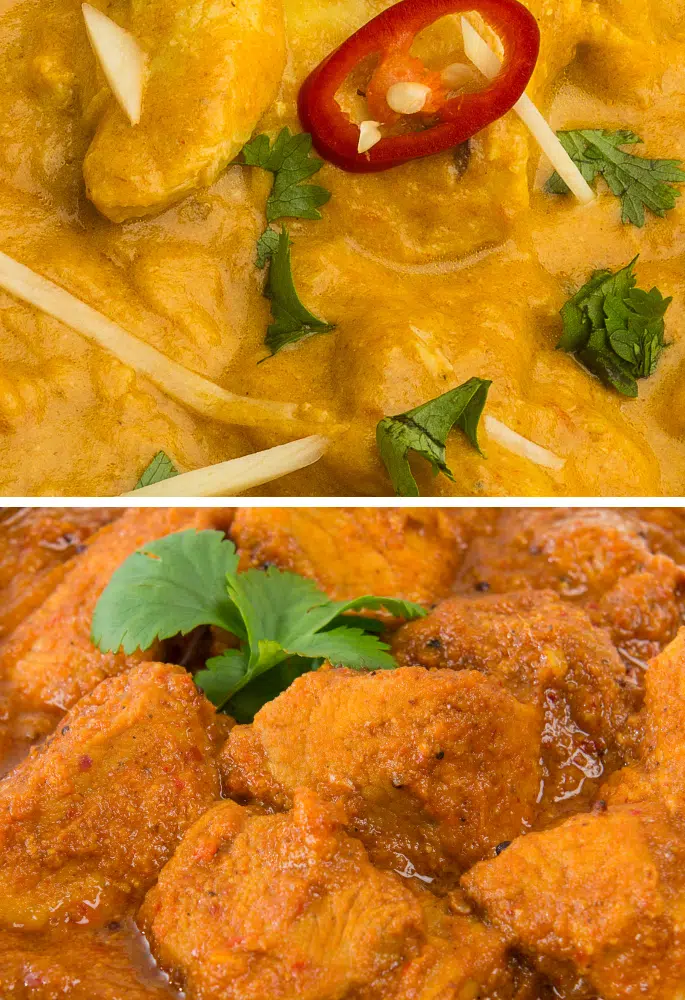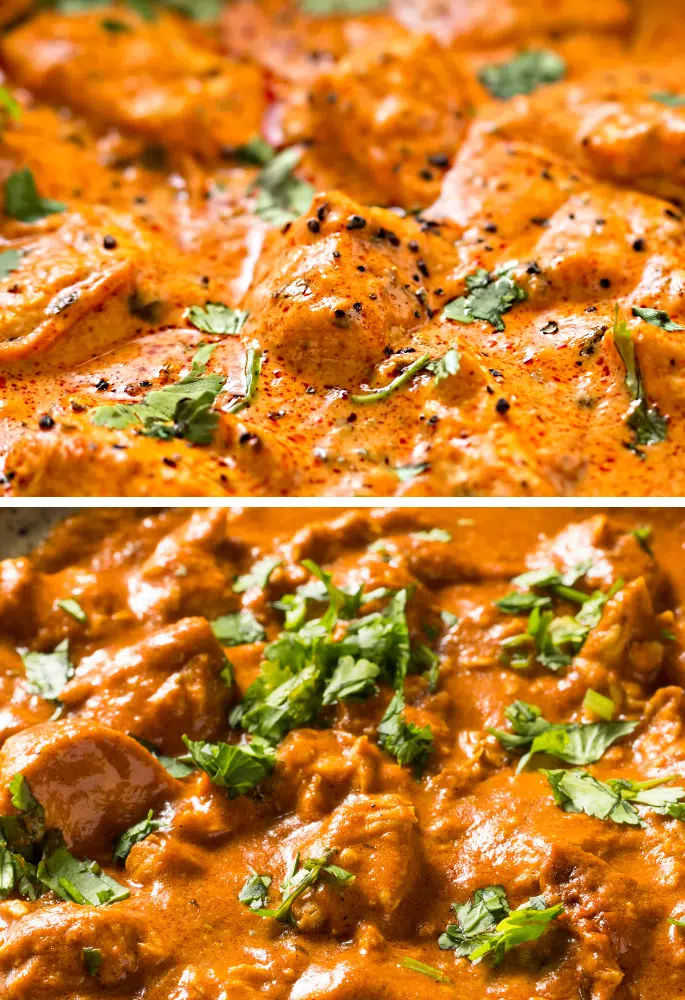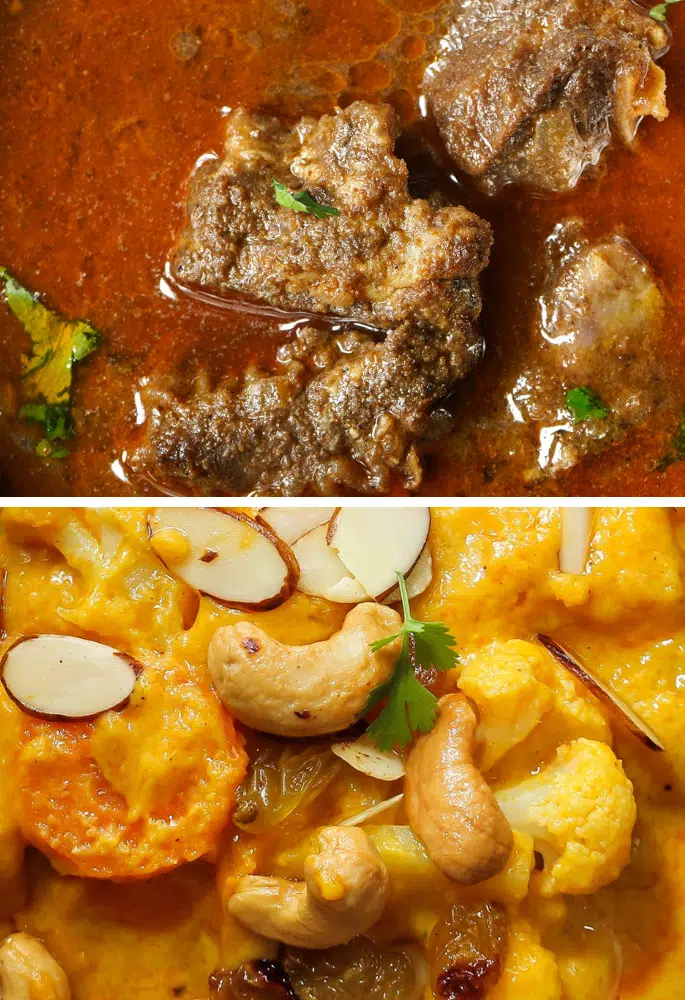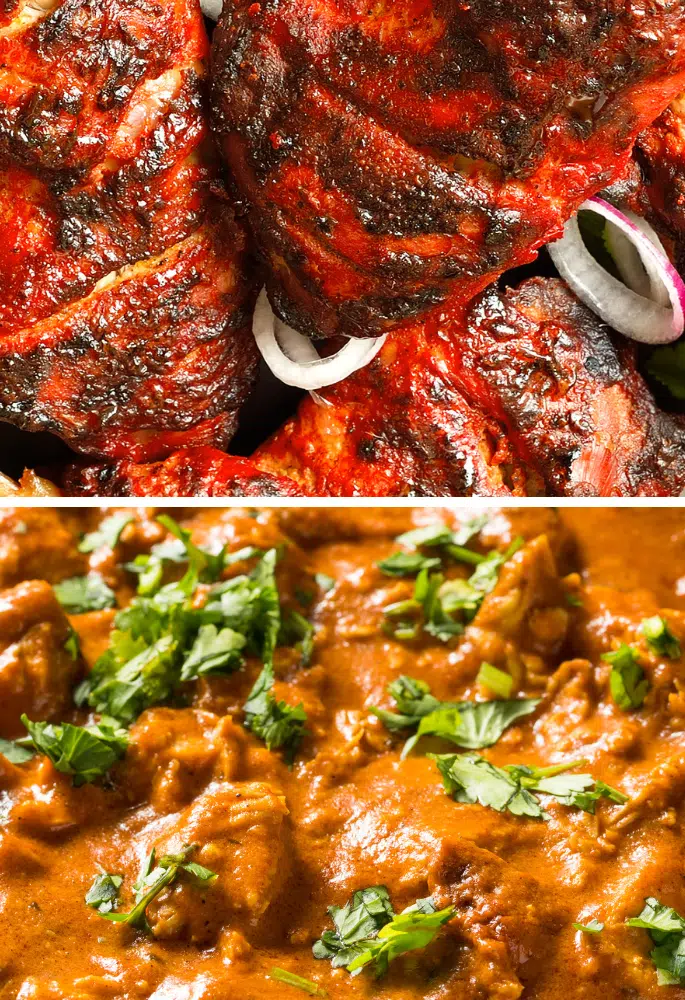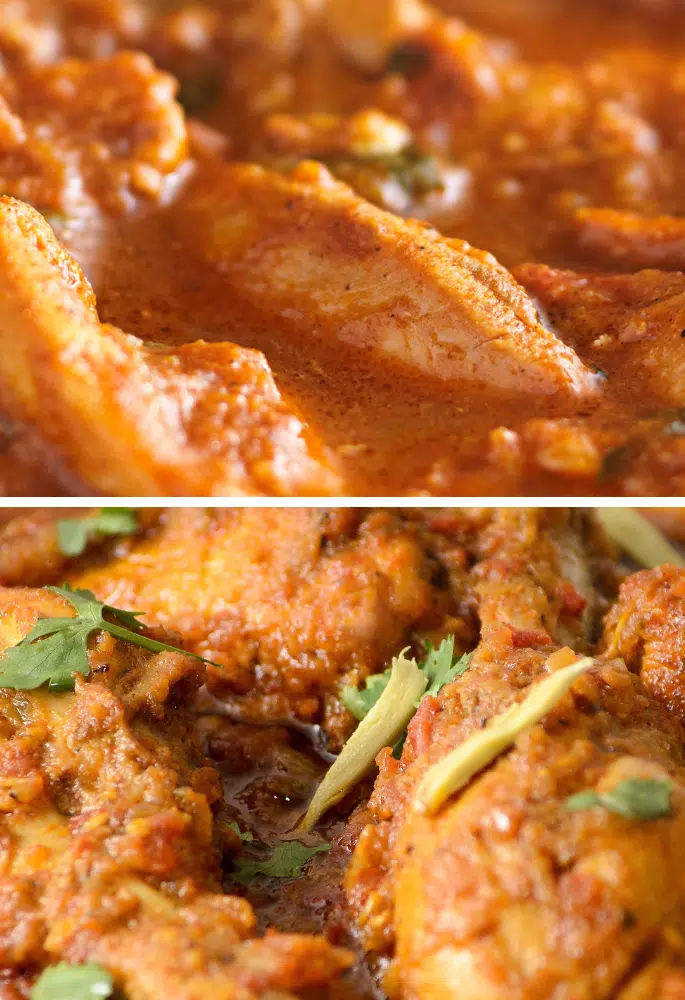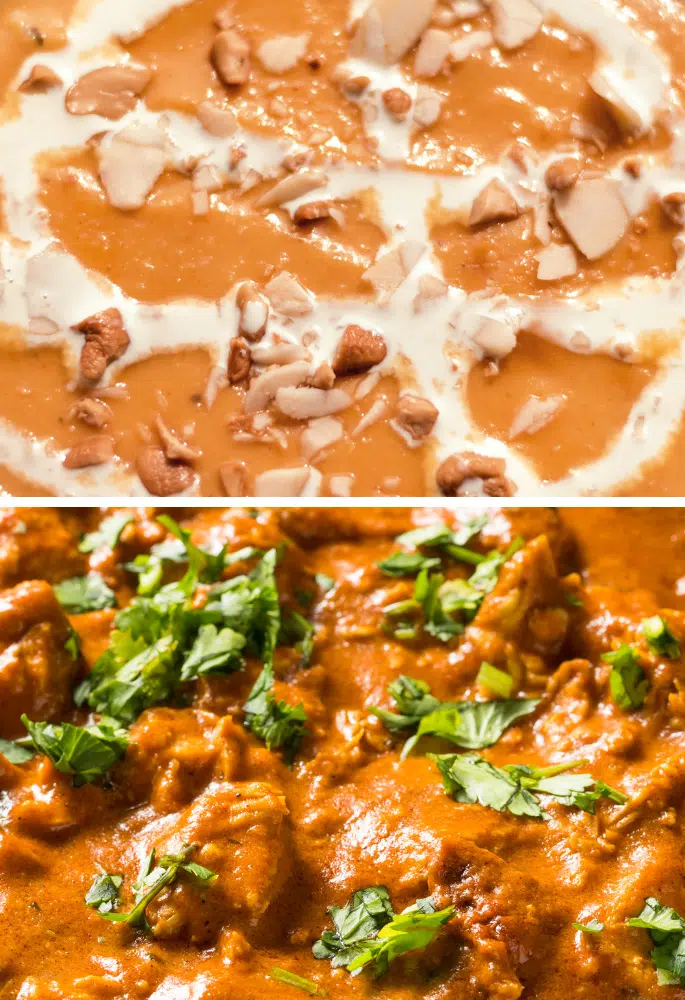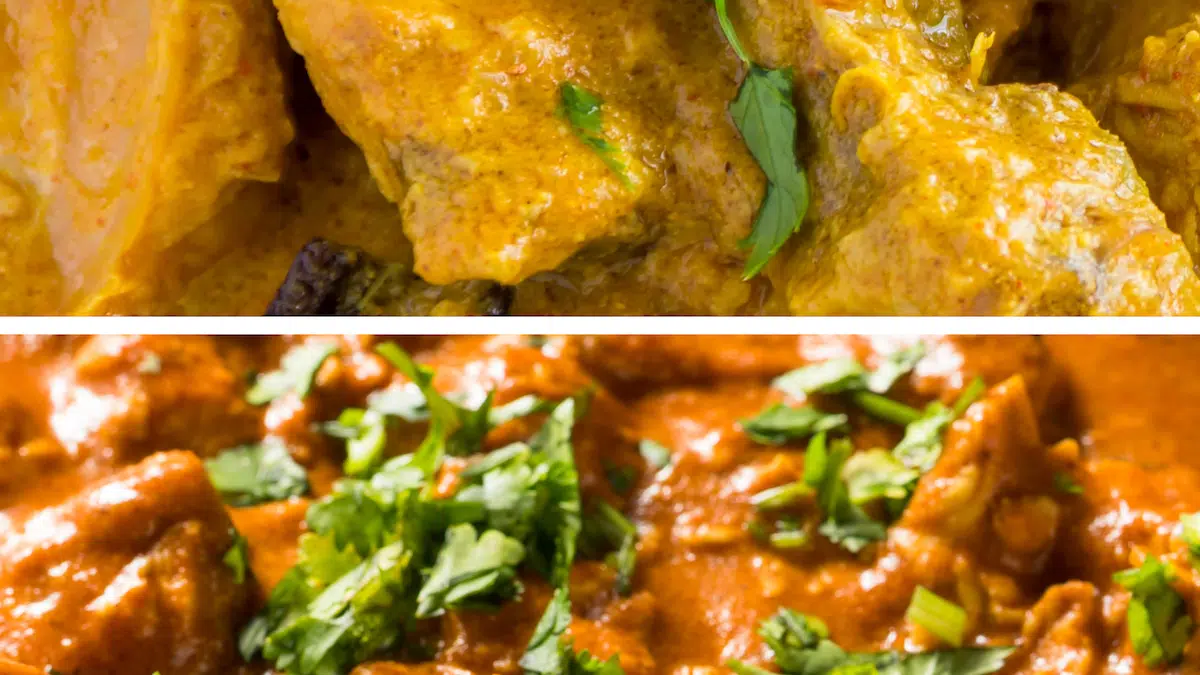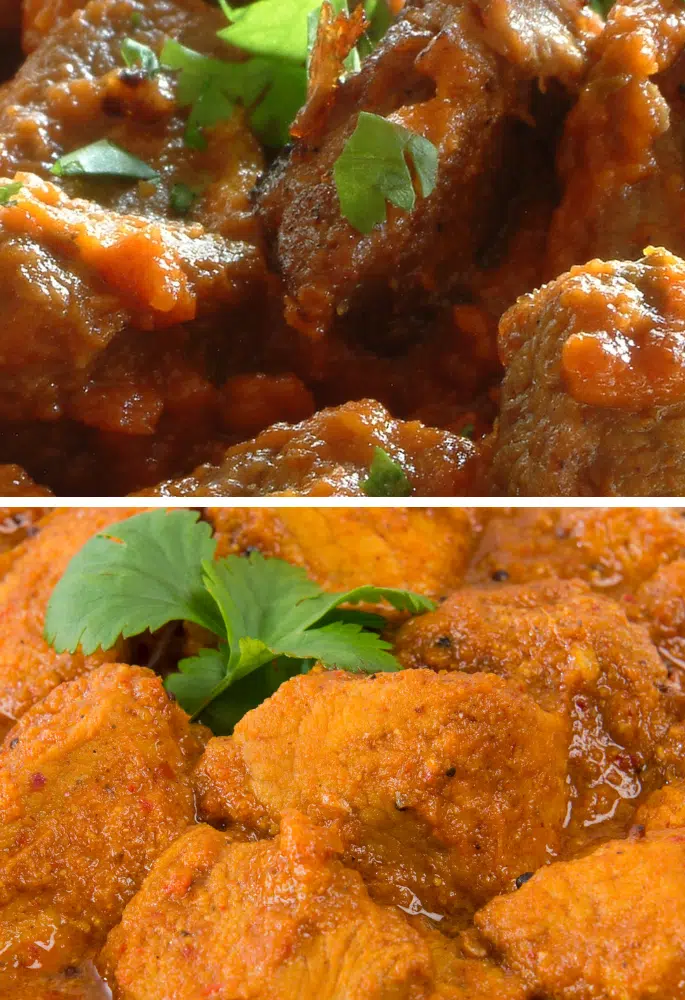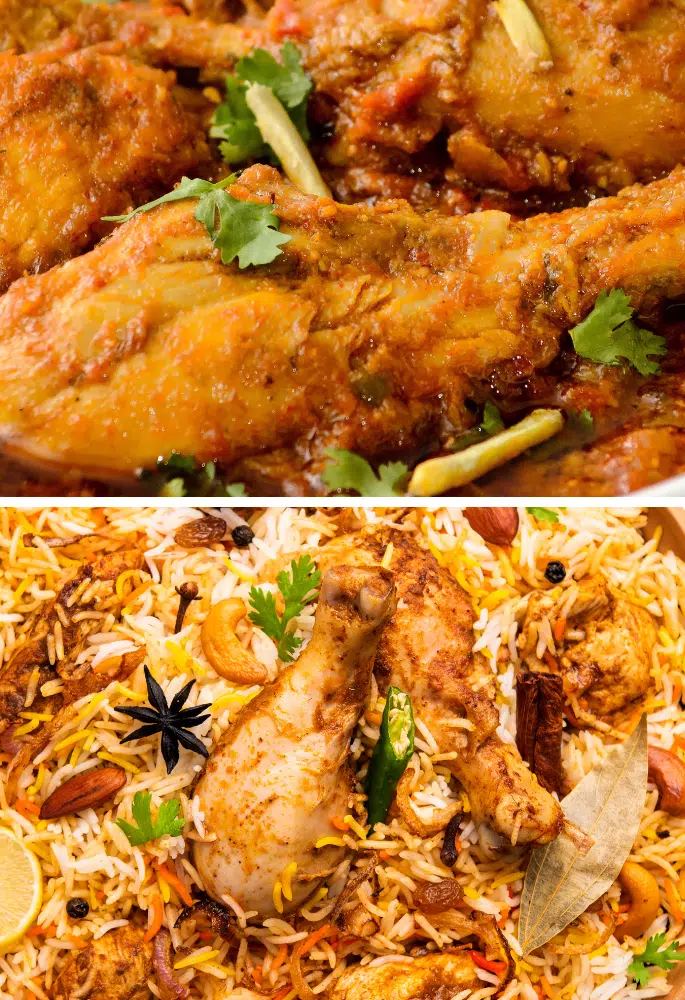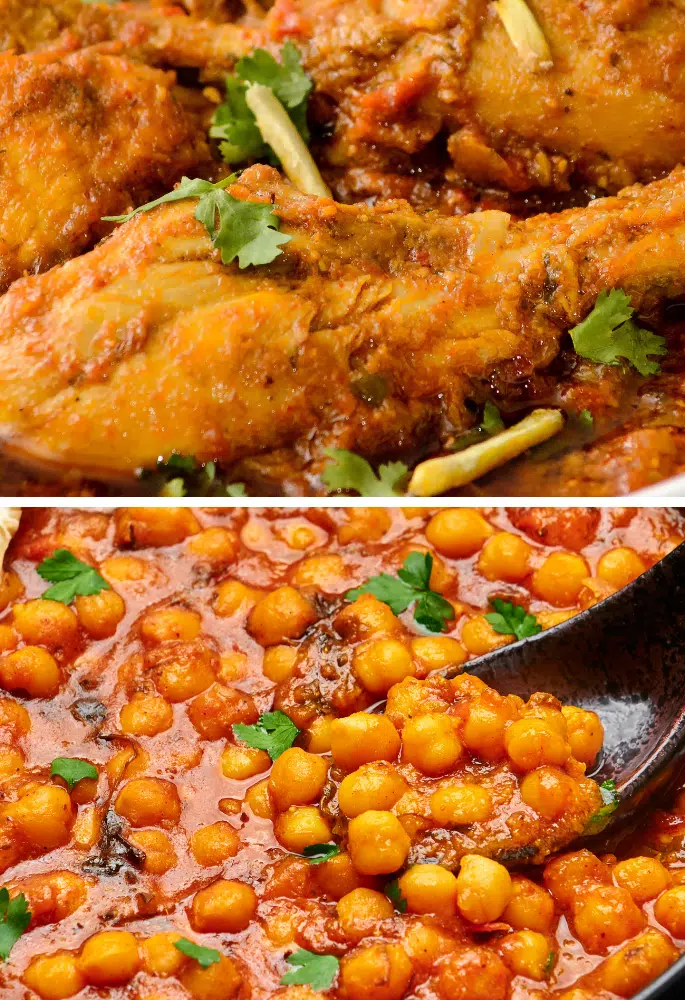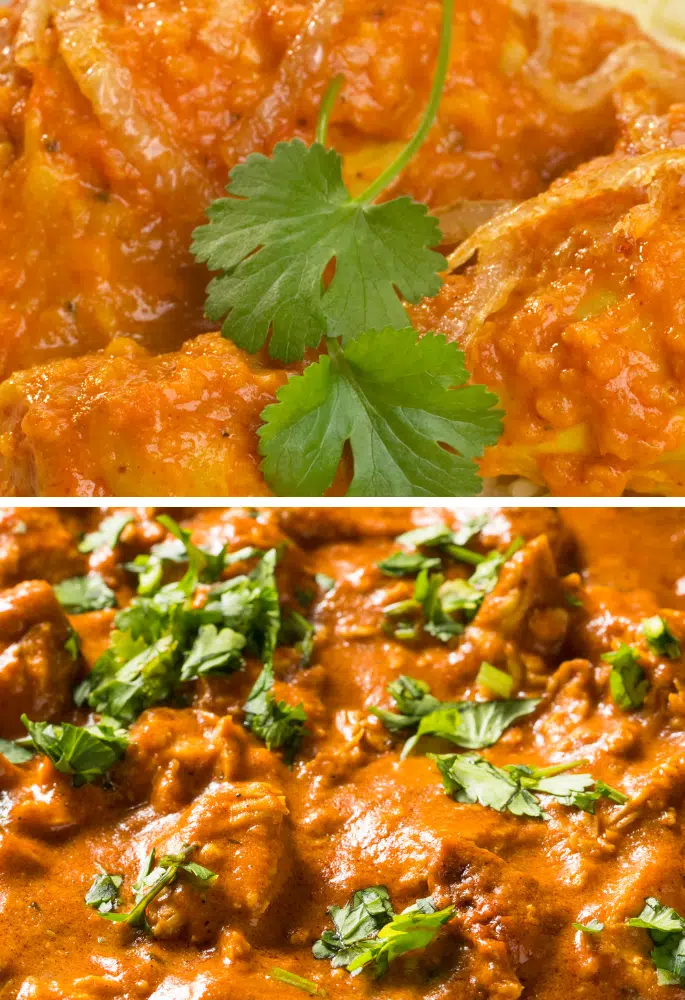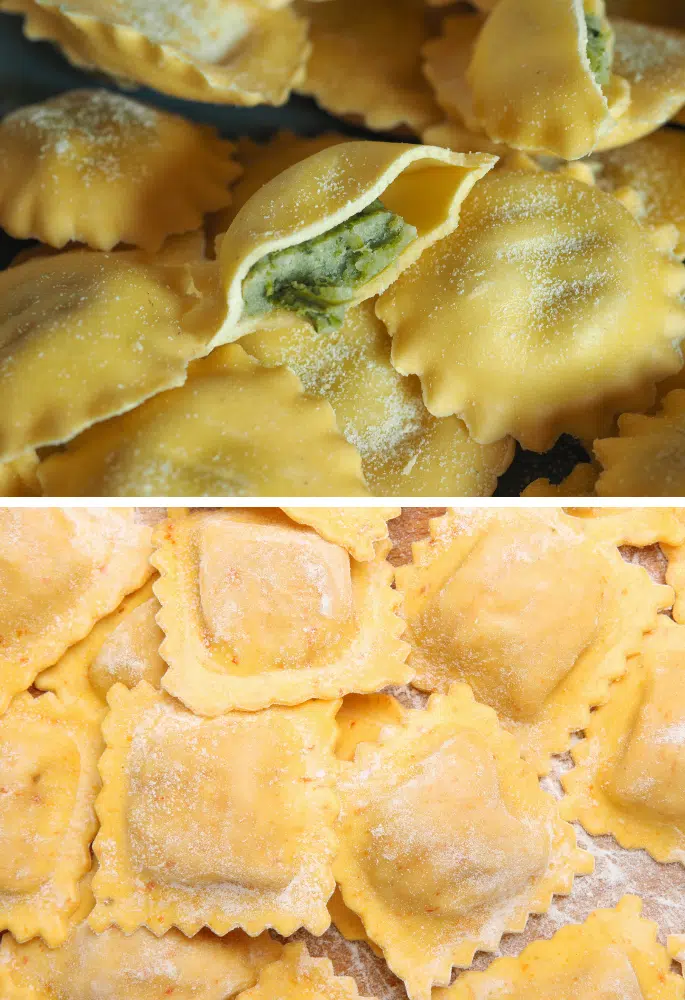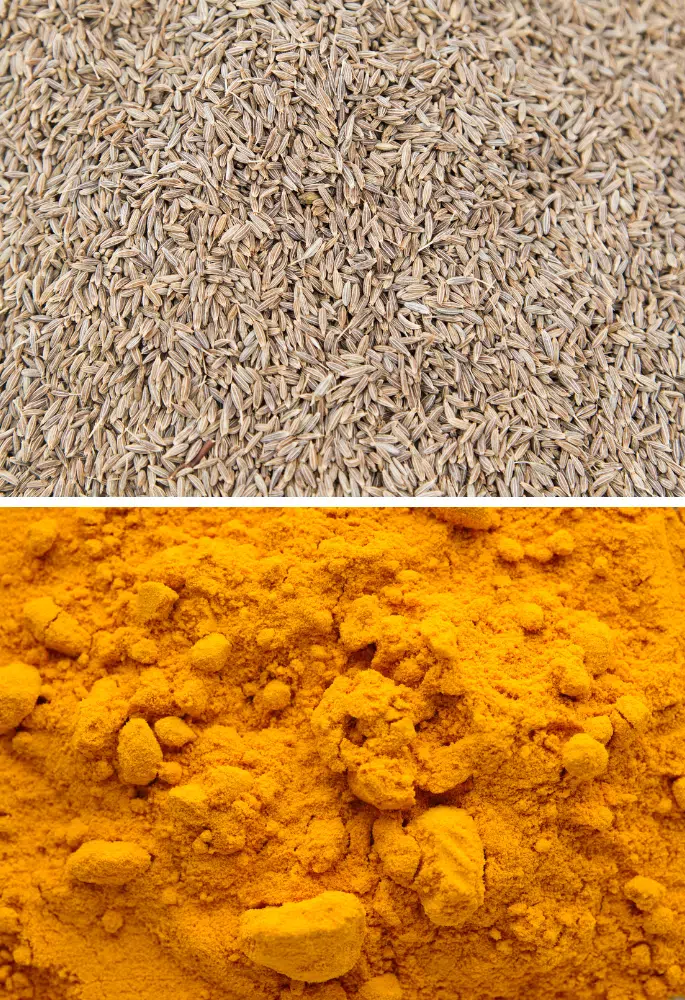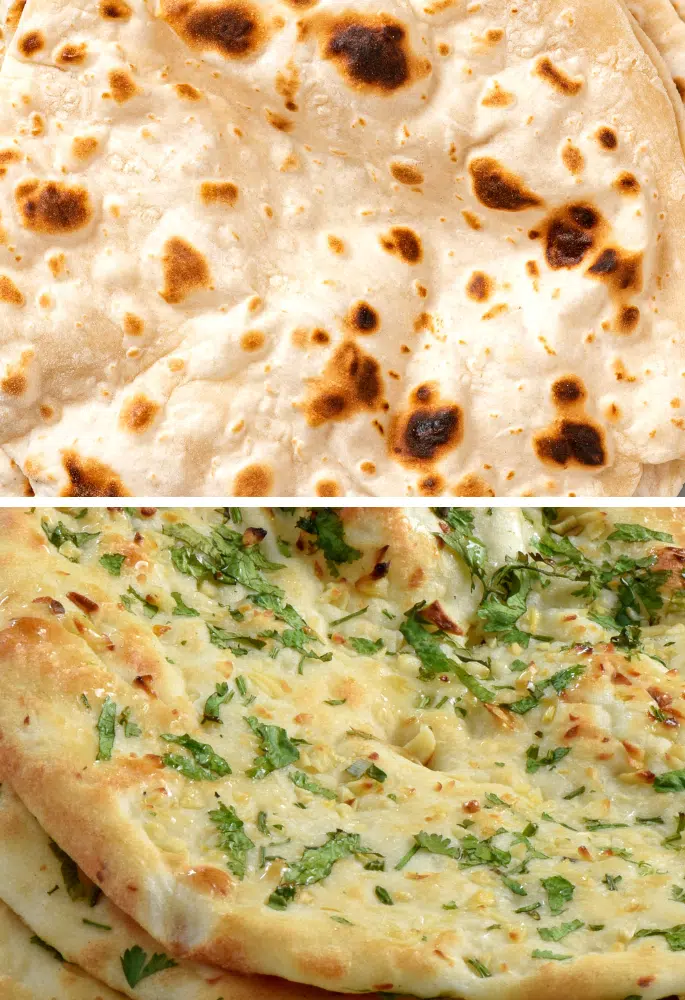Bhuna and Karahi are two prominent dishes in South Asian cuisine, each known for its robust flavours and distinct cooking methods. While Bhuna emphasizes the process of cooking spices and meat together until they form a concentrated, flavorful sauce, Karahi focuses on stir-frying ingredients in a heavy, deep cooking pot known as a ‘karahi.’
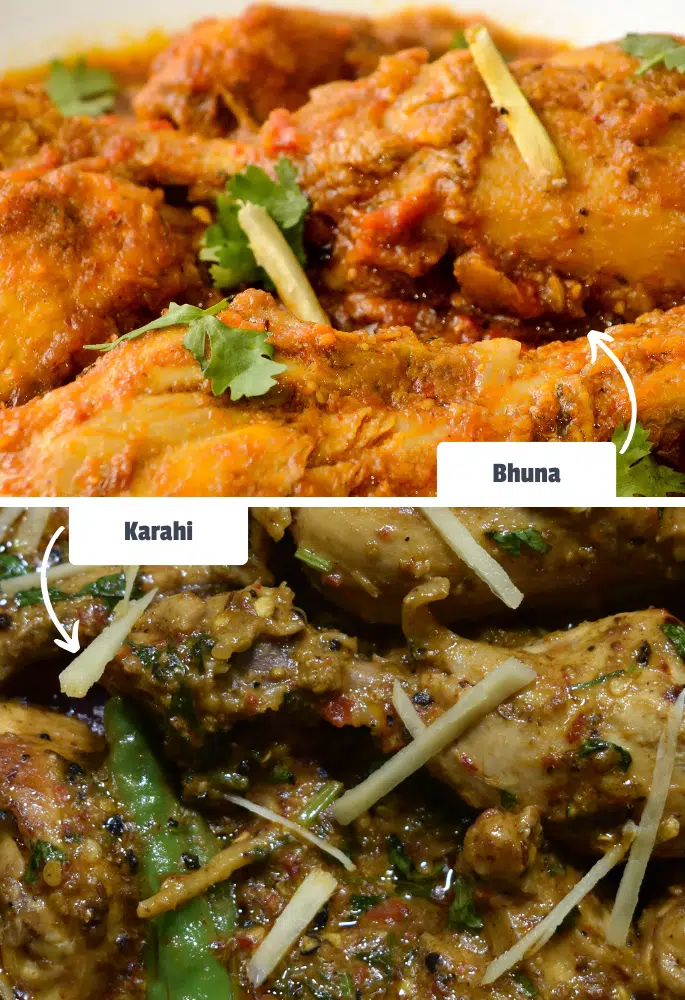
Bhuna is a method where ingredients are pan-fried with spices until they form a thick sauce, offering a deep flavour profile. In contrast, Karahi is a quick stir-fry dish prepared in a specific type of wok, known for its spicy taste and relatively quicker cooking process, retaining the freshness of the ingredients.
What is Bhuna?
Bhuna is a term in Indian and Bangladeshi cuisine that refers to both a cooking technique and the dish resulting from it. The process involves frying spices and ingredients such as meat or vegetables over low heat, allowing them to simmer in their own juices.
This method concentrates the flavours, creating a dish with a thick, rich sauce. Bhuna dishes are known for their depth of flavour, achieved through the slow cooking process that intensifies the natural tastes of the ingredients.
What is Karahi?
Karahi refers to both a type of cooking vessel similar to a wok and the dishes cooked in it, popular in India, Pakistan, and Afghanistan. The dish typically involves quickly cooking meat (often chicken or lamb), vegetables, and a blend of aromatic spices in the karahi pot, with minimal water or broth.
This method helps retain the freshness and enhances the natural flavors of the ingredients.
Karahi dishes often include tomatoes, ginger, and garlic, creating a vibrant, semi-dry sauce that clings to the main ingredients.
Similarities Between Bhuna and Karahi
You might be surprised to hear that there are a few things that makes these two curries fairly similar:
- Regional Popularity: Both Bhuna and Karahi are staples in South Asian cuisine, particularly in India and Pakistan, where they are enjoyed for their rich flavours and aromatic spices.
- Spice Usage: Each dish utilizes a variety of common South Asian spices, such as cumin, coriander, turmeric, and garam masala, to create complex and inviting flavours.
- Flexibility: Both dishes can be prepared with a range of main ingredients, including different types of meat or vegetables, catering to diverse tastes and dietary preferences.
Differences Between Bhuna and Karahi
There are a number of notable differences when comparing bhuna and karahi. Here are the 4 main things that splits these two types of curry:
- Cooking Method: Bhuna involves a slow-cooking process that reduces the sauce and intensifies flavours, while Karahi is a quicker method that involves stir-frying ingredients to preserve their freshness and texture.
- Consistency: Bhuna dishes are characterized by their thick, reduced sauce, whereas Karahi dishes tend to have a more liquid, albeit still relatively reduced, sauce.
- Cookware: Bhuna does not require specific cookware and can be prepared in any thick-bottomed pan, while Karahi dishes are traditionally cooked in a specific type of wok-like utensil that shares their name.
- Flavour Profile: Bhuna offers a deeper, more concentrated flavour due to the extensive cooking time, while Karahi features a more immediate, robust taste, reflecting the quick cooking and freshness of the ingredients.
Bhuna vs Karahi: Which Wins?
Come on! It’s time to vote. You’ve got to pick a winner. Do you put your vote behind bhuna or karahi?
Do You Prefer Bhuna or Karahi?
Hailing from Liverpool, Oliver is an adventurous chef with a penchant for exploring diverse cuisines and novel ingredients. Ollie, combining his love for local British flavours with global influences, brings innovation and charm to home cooking.


